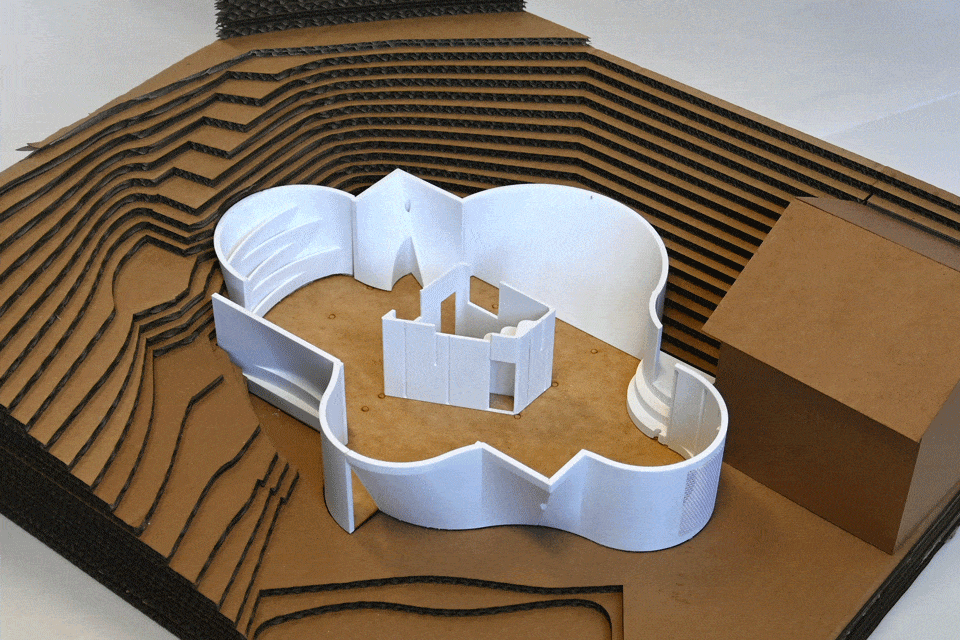For decades, China has experienced a mass migration of people from rural to urban areas – placing enormous strain on resources and facilities in the booming metropolises of Shanghai and Beijing.
However, now, China is experiencing a migration of sorts with younger generations returning to the villages, resulting in the Chinese government grappling with “a rural housing crisis” as younger people open hotels and shops and run online businesses.
To address this, researchers are now turning to 3D printing to reconstruct centuries-old infrastructure, using new technology to restore traditional wooden construction, in a move that could not only revitalise rural China but drive upcycling across the country.
Now, researchers are combining 3D technology with traditional wooden construction, creating new houses that could compete with more contemporary “cookie-cutter construction” for price and speed.
Known as “The Traditional House of the Future,” a new concept featured in the 2023 Dezeen shortlist for timber-rich projects, it is part of a Chinese plan to renovate hundreds of old wooden delipidated houses.
The project will see century-old timber houses being dismantled piece by piece before being rebuilt on the same site with concrete additions – an entrance courtyard, planting area, balcony, kitchen and bathrooms – that would be 3D-printed on site.
Hong Kong University professors John Lin and Lidia Ratoi are behind the concept – and like so many innovations, it came from the COVID-19 pandemic, with both professors joining forces to bring the project to life.
Professor Lin is a founding partner of Rural Urban Framework (RUF), a non-profit enterprise inside the university, and Professor Ratoi, with her experience in robotic fabrication and material sustainability.
“As Year 2 architecture teachers, we’d received funding to take students to engage in a real-life project in mainland [China],” according to Professor Lin, who spoke to the South China Morning Post about the project.
“But Covid restrictions meant we couldn’t travel, and the three-year deadline for the funding was approaching.”
That’s when both decided to combine their research and create a new programme for students. Professor Lin on how houses in rural China are being transformed and reused as more people move back from cities, and Professor Ratoi on how Hong Kong food and construction waste can recycled as biomaterials for robotic fabrication.
The result is an adaptive reuse experiment they believe to be the first of its kind – a fully restored ancient house, fully restored using modern 3D printing.
According to Professor Lin, Chinese ancestral houses are like modern kit homes, “built using mortise and tenon joints, that are easily assembled, disassembled, which made them ideal for the experiment.”
They chose one house in Nanlong village, which, typical of its era, had been built using local timber, without any steel fastenings. This prototype structure, which accommodated animals, lacked an indoor bathroom and only had rudimentary cooking facilities.
“We scanned the entire house – all the crooked columns, all the imperfections that come from working with natural material that alters over time, were incorporated into the 3D language,” Professor Ratoi said.
The team created a model for local carpenters on-site to follow. At the same time, Shenzhen-based Professor Xu Weiguo, head of the architecture department at mainland China’s Tsinghua University, provided the 3D printing using robotic arms on site.
As with any build, changes to the original plans had to be made along the way, leading to surprising assumptions about the unorthodox pairing of conventional and cutting-edge construction.

“Large-scale 3D printing is much like a traditional craft, as it requires a skilled technician to work alongside the machine and continuously observe real-life processes, constantly augmenting things such as printing speed, the composition of the material, or when to start and stop printing,” Professor Ratoi said.
“For example, going too high too fast may result in a collapsed wall.”
The experiment also showed the versatility of traditional Chinese houses and those building them.” According to Professor Lin, this is the first project of its type in the world that has taken robots into rural areas.
“We are very excited about bringing these two techniques together and want to continue to explore the role of technology in enabling the adaptation of the existing built environment.”
Beyond historic preservation and the clear social, cultural and environmental impacts, the project tests a potential new model of contemporary housing.
Decades after an economic exodus saw villagers leaving their homes in droves to work in cities, that trend is now reversing.
“A lot of younger people are moving back, opening small hotels and shops, or running online businesses,” Professor Lin says. “Villagers still farming may also be making additional income from internet commerce.”
He said that whilst traditional village housing might not meet contemporary needs, “neither does modern cookie-cutter construction built for low cost and speed.”
“Our prototype encapsulates a rapidly changing lifestyle, at the intersection between traditional and modern, neither rural nor urban,” he said, before adding that the cost would be similar to building a concrete frame and brick in-fill house.
For Professor Ratoi, the project questions how technology can act as a social potentiator and become a means to strengthen local and cultural building practices.
“The iterations possible with 3D printing are endless,” she said, allowing houses to be customised to individual needs without incurring additional expense.
A family has moved into a new home, and Lin and Ratoi will review the results one year from now. They say that, in the future, the government is considering applying the Traditional House of the Future as a strategy for commercialising the village by creating guest houses for tourists.
For now, Lin and Ratoi are looking for investors to fund similar restorations across China.






